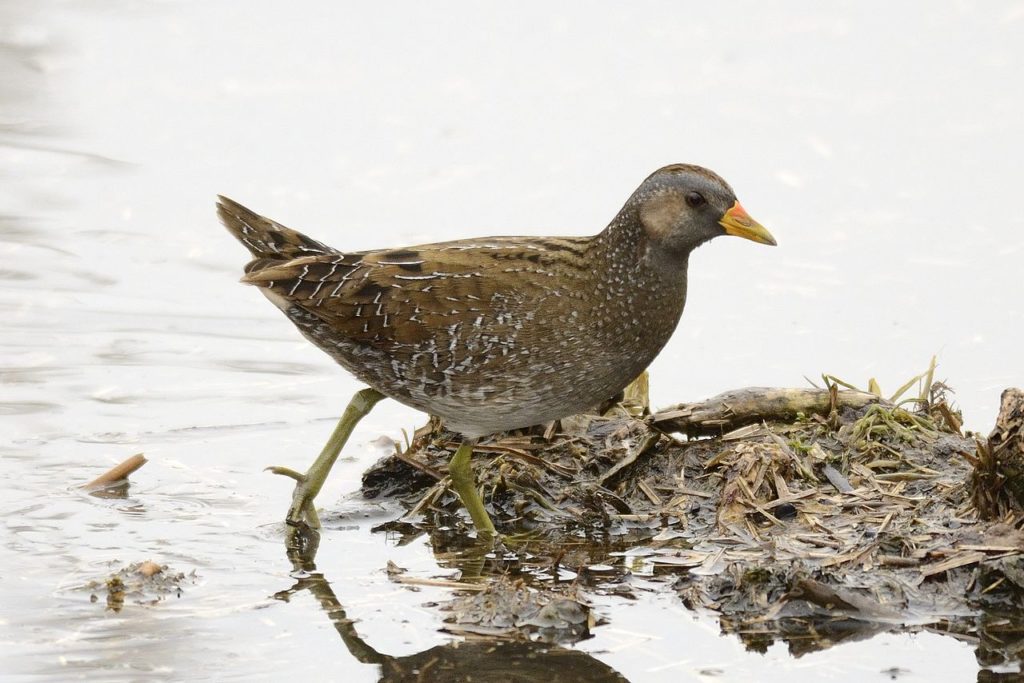Don’t let your “skamart” list grow!
Sweden exemplifies a vacation paradise, with 100,000 lakes, countless islands in the archipelagos of the Baltic Sea, and the diversity of one of Europe’s five biggest countries. Three-quarters of Sweden consists of forests, in which moose and bears romp about. In such vast areas of nature, it is no wonder that Sweden is the cradle of fågelskådning, bird watching.
We owe the binary nomenclature of scientific names to Swede Carl von Linné (aka Carl Linnaeus) in the 18th century—not only in plant life but also in zoology. Linné was dedicated to ornithology.
Although much of his early work on naming and classifying birds has not held the test of time (as his work on flora has), he was an ornithologist. We build on his foundation of species classification today.
EVEN THOUGH THE BALTIC SEA DOES NOT PROVIDE THE SAME DIVERSITY OF SPECIES AS THE NORTH SEA, THE TEMPERATURE RANGE IN SWEDEN—FROM THE MILD SEA CLIMATE TO ARCTIC COLD—OPENS A VARIETY OF HABITATS.
More than 200 years later, Lars Svensson authored the standard books for North African, Near Eastern and European bird species. In his bird guides he describes 900 species in every detail, an important tool for bird watchers as they identify birds throughout Europe.
Swedish bird watchers are dedicated to their passion
Sweden hosts avian specialties including Rock Ptarmigan, Red-necked Grebe, Snowy Owl, Capercaillie, Northern Gannet, Whimbrel, Wood Duck, and Red-footed Falcon. Sweden’s Club 300 registers 591 species, including several rarities. The most active members in the club have seen as many as 475 species.
Swedish slang among bird watchers demonstrates their determination: If they see a bird they just “cross” it, which in Swedish is kryss. A species they have not yet seen is skamart, which means “shame species.” It is a mark of shame not to have seen the bird yet!
The most well-known hotspots for birding are on the two big islands, Öland and Gotland, in southeast Sweden in the Baltic Sea. We describe here three of our favorite birding locations in Sweden. We also recommend the Getterön peninsula in the region of Halland; the archipelago Utlängan in Blekinge; and the nature reserve Björns Skärgård, north of Uppsala, which means “bear’s archipelago.”
Svartådalen
In the past bird watchers may not be aware of this area close to Västerås, north-west of Stockholm, as one of the five most important hotspots. But the region, called “Eden’s garden” by the tourist information agency, has gained more attention from bird watching recently.
THE RIVER SVARTÅN FORMS A HUGE LAKE SYSTEM AND REGULARLY FLOODS THE SURROUNDING LAND.
This broad wetlands with its variety of flora and fauna serves as a filling station for many migratory birds. The nature reserve has been integrated into the Natura 2000 areas because of its international importance for bird migration. In addition to the thousands of the Whooper Swans that rest here, birders can find White-tailed Sea Eagle, Corncrake, Black Tern, and Eurasian Curlew.

Öland: Ottenby and Norra Udde
“Since I was a little child, I’ve watched birds. For me, it was obvious to also do this professionally. As a grown-up, I have searched for a location in Sweden, where I best could see several bird species every day. This is how I came to Öland, to the lighthouse of Segerstad.” Christian Cederroth is a modern lighthouse keeper on Öland.


He works as a nature and bird-watching guide, and shows tourists the beautiful region. On days without tours, he watches birds from morning until night. Often, he sees 100 bird species per day—a number that few backyard bird watchers achieve over the course of a lifetime!
In addition to the lighthouse in the south, the North Coast and Ottenby are the best places to watch birds on Öland. The vast wetlands and the coast here are also essential stopovers for migrating birds. Other species regularly spotted on Öland include Yellow Wagtail, Ruff, Slavonian Grebe, Dunlin, Western Marsh-Harrier, and Common Snipe.
Falsterbo
In southernmost Sweden, close to Denmark, you find the small town Falsterbo, with its important bird observatory. An estimated 500 million migratory birds pass by in fall. In order to avoid the long flight across the Baltic Sea, many birds opt for an alternative route along the coast, passing by Falsterbo.

Scandinavian and international bird watchers celebrate this with a festival at the end of August each year. Nature conservation organizations and optic manufacturers exhibit, and respected ornithologists and experienced birders present talks. Birders often bike (or drive) to the known hotspots at the coast, where they regularly tally up to 90 species per day. The huge number of raptors is especially impressive. Even the common species please most birders. But rarities show up, including Tengmalm’s Owl, Pied Flycatcher, Red-throated Pipit, and Tawny Pipit, increasing the excitement of festival attendees.


